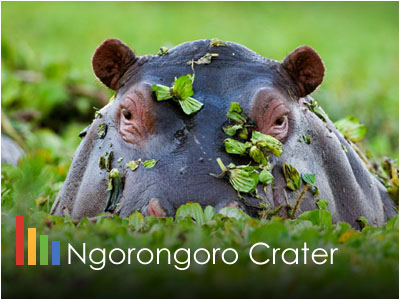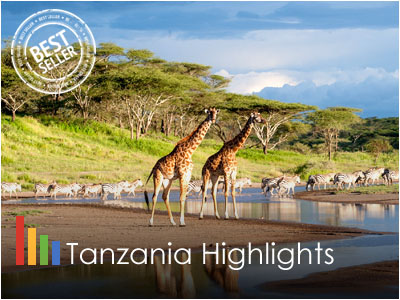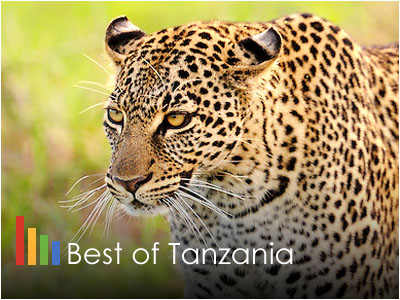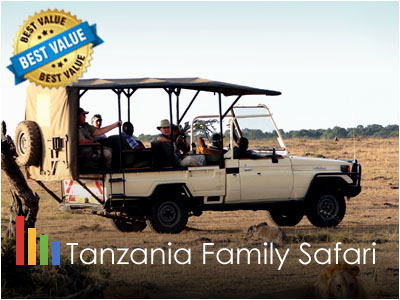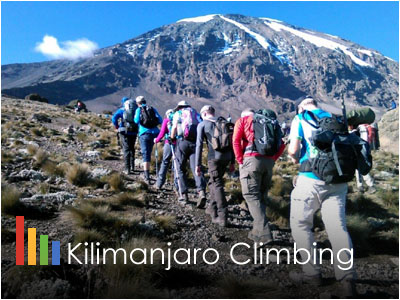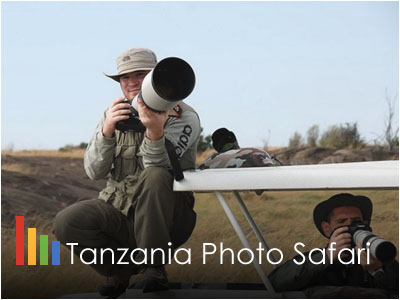Lake Manyara National Park, Tanzania, Africa
Lake Manyara National Park - Tanzania, Africa
Lake Manyara National Park, situated between Lake Manyara and the Great Rift Valley, is an unspoiled paradise of ground water forest fed by underground springs and teeming with wildlife such as elephants, hippos, giraffes, buffaloes, antelopes, and some of the largest baboon troupes in Africa. Lake Manyara National Park, which encompasses an area of 330 sq.km, of which 200 sq.km is lake, was proclaimed a game reserve in 1957 and registered three years later as a National Park. The park is situated between the 600 m high escarpment of the Great Rift Valley and Lake Manyara and is 126 km south-west of Arusha.
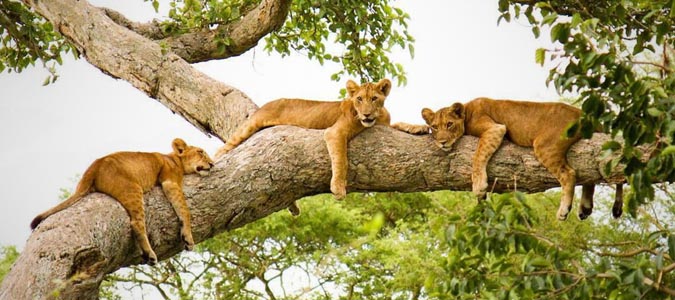
Basic Facts - Lake Manyara National Park
Lake Manyara measures 330 sq km (127 sq miles), of which up to 200 sq km (77 sq miles) is the lake when water levels are high. It is located in Northern Tanzania. The entrance gate lies 1.5 hours (126km/80 miles) west of Arusha along a newly surfaced road, close to the ethnically diverse market town of Mto wa Mbu. Lake Manyara National Park well known for the tree climbing lions, the soda ash lake and its flamingos, we are talking about breathtaking scenery! This travel guide offers you the most updated information about the attractions, lodges, getting there and so much more. Lake Manyara has a big number of elephants, many giraffes; zebras, wildebeest, impala, waterbuck, and warthog, small known shy Kik’s dik dik as well as Klipspringer along the ramps of the escarpment. Leopards are hosted within the broken forests and escarpment, healthy lions that are widely known for their tree climbing pranks. This used to be a special character of the park which is not the case today. Regarded as Africa’s largest, huge herds of baboons are expected by most of the travelers.
More About Lake Manyara National Park
Located on the way to Ngorongoro Crater and the Serengeti, Lake Manyara National Park is worth a stop in its own right. Its ground water forests, bush plains, baobab strewn cliffs, and algae-streaked hot springs offer incredible ecological variety in a small area, rich in wildlife and incredible numbers of birds. The alkaline soda of Lake Manyara is home to an incredible array of bird life that thrives on its brackish waters. Pink flamingo stoop and graze by the thousands colourful specks against the grey minerals of the lake shore. Yellow-billed storks swoop and corkscrew on thermal winds rising up from the escarpment, and herons flap their wings against the sun-drenched sky. Even reluctant bird-watchers will find something to watch and marvel at within the national park. Lake Manyara’s famous tree-climbing lions are another reason to pay a visit to this park. The only kind of their species in the world, they make the ancient mahogany and elegant acacias their home during the rainy season, and are a well-known but rather rare feature of the northern park. In addition to the lions, the national park is also home to the largest concentration of baboons anywhere in the world — a fact that accounts for interesting game viewing of large families of the primates. Activities available in the park include Game drives, night game drives, canoeing when the water levels is sufficiently high, Cultural tours, picnics, bush lunch/dinner, mountain bike tours, abseiling and forest walks on the escarpment outside the park.
While neighbouring Tarangire National Park is home to Tanzania's largest elephant population, it is in Lake Manyara that you find Africa's largest concentration of elephants. When it comes to spotting elephants in the wild, you'll find few places that can compete with elephants. In addition to these giants, the park also offers excellent opportunities to see mongooses, the adorable Kirk's dik-dik, hippos, buffaloes, antelopes, gazelles, and large troupes of baboons. For more information regarding tours and safaris to Lake Manyara National Park, please DO NOT hesitate to Contact Us.
Lake Manyara’s famous tree-climbing lions are another reason to pay a visit to this park. The only kind of their species in the world, they make the ancient mahogany and elegant acacias their home during the rainy season, and are a well-known but rather rare feature of the northern park. In addition to the lions, the national park is also home to the largest concentration of baboons anywhere in the world — a fact that accounts for interesting game viewing of large families of the primates. Stretching for 50km along the base of the rusty-gold 600-metre high Rift Valley escarpment, Lake Manyara is a scenic gem, with a setting extolled by Ernest Hemingway as “the loveliest I had seen in Africa”. The compact game-viewing circuit through Manyara offers a virtual microcosm of the Tanzanian safari experience.
The park contains the most pachyderms per km sq. in Tanzania. As visitors enter the gate, they pass into the lush forest, home to troops of baboons and blue monkeys. Buffalo and hippo lurch in the adjacent Hippo Pool. The vegetation eventually merges into flat topped acacia woodland where, in the heat of the day entire prides of lion can be seen stretched on the branches of these trees - a habit prevalent to Manyara lions. Along with these amazing tree-climbing lions there are the usual browsers and grazers as well as the curios-looking banded mongoose. Two thirds of the park is dominated by the slightly alkaline lake which is home to a huge variety of waterbirds. More than 400 species of bird including flamingo, pelican, red billed quelea, storks, sacred ibis, cormorants and Egyptian geese can be sighted in this area. Other species of birds include the African spoonbill, lesser flamingo, white pelican and white faced duck.
There is One luxury treehouse-style camp, public bandas and campsites inside the park. One luxury tented camp and three lodges perched on the Rift Wall outside the park overlooking the lake. Also, there are several guesthouses and campsites in nearby Mto wa Mbu. Game-viewing is at its best between July and October, while bird-watchers will find the best conditions between November and June. Due to its easy accessibility from Arusha, it can be visited on a day excursion from this centre. At the Southern end of the park are hot Sulphur Springs known as Majimoto. Further along the forest the area opens up into woodlands, grassland, swamps and beyond, the soda lake itself. Lake Manyara National Park is a small but scenic safari park, excellent for birdwatching and a good area to find elephant.
Lake Manyara is a good soft introduction to the safari experience. It is a magical and pretty park that winds its way around a mainly forested driving route between the banks of soda water Lake Manyara and the impressive rise of the Great Rift escarpment. Lake Manyara National Park is 130 km west of Arusha and the drive takes about two and half hours. The entrance to the park is off to the left of the Great North Road at Makuyuni. From here there is a track that goes past the lake and through the village of Mto wa Mbu to the park entrance. Mto wa Mbu ( meaning Mosquito Creek) is a small busy market town selling fruit and vegetables produced by the fruitful adjacent farms. The little settlement has become a temporary stop over for tourists and campers. The dry season of July to October is the best time to visit to spot large mammals, whilst the wet season of November to June is the best time for birdwatching.
AfriChoice operates a wide range of carefully designed tours and safaris to Lake Manyara National Park by providing transport and booking a hotel for you. Our safari consultants will always be at your assistance should you need a tailor-made holiday to this unique destination. NB: For more information regarding Lake Manyara National Park, DO NOT hesitate to Contact Us.
Contact Us for more information:
Tanzania Popular Wildlife Safaris
-
Serengeti Safari Adventure
Serengeti 3 Days Safari
-
Ngorongoro Crater Tour
Ngorongoro Crater Safari
-
Tanzania Highlights Safari
Tanzania Wildlife Safari
-
Best of Tanzania Safari
Best of Tanzania Safari
-
Tanzania Family Safari
Tanzania Family Safari
-
Mt. Kilimanjaro Climb
Mount Kilimanjaro Tanzania
-
Tanzania Photo Safari
Tanzania Wildlife Photo Safari
-
Tanzania Safari & Zanzibar
Tanzania Safari & Zanzibar Beach



 Paul Kitching - UK
Paul Kitching - UK Karen Howard - CANADA
Karen Howard - CANADA



